Get ready to dive into the bold, briny flavors of Encebollado, Ecuador’s beloved national dish that’s as comforting as it is invigorating. This hearty tuna and yuca stew, simmered in a rich tomato-onion broth and topped with tangy pickled red onions and a splash of lime, is a coastal classic that warms the soul and wakes the senses. Whether served for breakfast after a long night or as a midday staple, Encebollado is a delicious celebration of Ecuadorian tradition—fresh, filling, and full of flavor in every spoonful. Read More...
Encebollado – The Soulful Stew That Became Ecuador’s National Dish:
In the lush, coastal heart of Ecuadorian cuisine, no dish is as iconic—or as comforting—as Encebollado. This robust fish stew, made with albacore tuna, yuca (cassava), and a tangy tomato-onion broth, has evolved from humble coastal roots into a national treasure. Beloved for its bold flavor and curative reputation, especially as a morning-after remedy, Encebollado reflects Ecuador’s deep connection to the sea, indigenous traditions, and culinary adaptability.
A Dish Born of the Coast:
The origins of Encebollado trace back to Ecuador’s Pacific coastal provinces, particularly Manabí and Esmeraldas, where fishing is central to daily life. Fresh-caught albacore tuna (bonito or “albacora”) is the star of the dish, traditionally simmered with yuca—a starchy root vegetable introduced by indigenous cultures long before colonization.
Its name, “Encebollado,” literally means “with onions,” highlighting the other key element: a generous topping of pickled red onions (curtido), which adds sharpness and acidity that cuts through the rich broth. The tomato and spice base, likely influenced by Spanish and Afro-Ecuadorian cooking traditions, balances heat, salt, and citrus, making the stew deeply aromatic and uniquely satisfying.
Indigenous and Colonial Influence:
The combination of fish and yuca has been part of Ecuadorian indigenous diets for centuries. With the arrival of the Spanish came new ingredients like onions, citrus fruits, and cumin—all of which were incorporated into local cooking techniques. What makes Encebollado special is the way it marries these influences: indigenous staples, colonial seasonings, and Afro-Caribbean-style garnishes like lime and chili.
Over time, this fusion produced a stew that was both nutritious and restorative, often prepared in large pots to serve entire families or communities.
More Than a Meal: A Cultural Ritual:
Though Encebollado can be enjoyed at any time of day, it has developed a reputation in Ecuadorian culture as the ultimate hangover cure. Locals often seek it out in the early morning hours—especially on weekends—at bustling markets and roadside eateries called encebolladerías. It’s hearty enough to serve as breakfast, lunch, or a pick-me-up between shifts.
The communal aspect of eating Encebollado—sitting elbow-to-elbow at a crowded table with a bowl of steaming stew, plantain chips on the side, and lime wedges ready—is a deeply ingrained ritual across generations.
National Recognition:
While Ecuador does not have an official law designating a national dish, Encebollado is widely regarded as the country’s culinary symbol. Surveys and cultural discussions consistently rank it at the top of Ecuadorian cuisine. Its popularity spans regions and social classes, served everywhere from home kitchens to coastal seafood stands and urban restaurants.
In many ways, Encebollado embodies Ecuador’s diverse landscape and spirit—from the coastal waters that provide the fish, to the Andean influence on root vegetables, and the blend of pre-Columbian, Spanish, and Afro-Ecuadorian culinary heritage.
A Dish That Tells a Story:
Today, Encebollado is not just a dish—it’s a story in a bowl. It tells of fishermen rising before dawn, of markets buzzing with hungry patrons, of family recipes passed down through generations. It captures Ecuador’s maritime soul and its ability to transform simple, local ingredients into something deeply nourishing and unforgettably flavorful.
For Ecuadorians at home or abroad, a steaming bowl of Encebollado is more than comfort food—it’s a taste of identity, memory, and national pride.
Cook the Tuna:
Cook the Yuca:
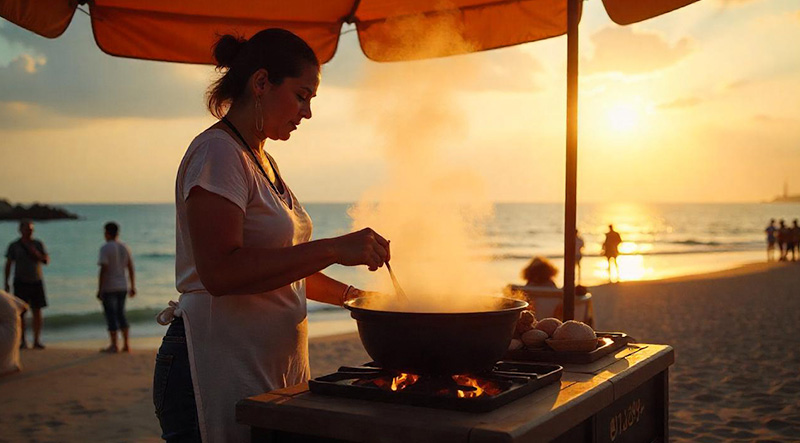
Prepare the Refrito (Flavor Base):
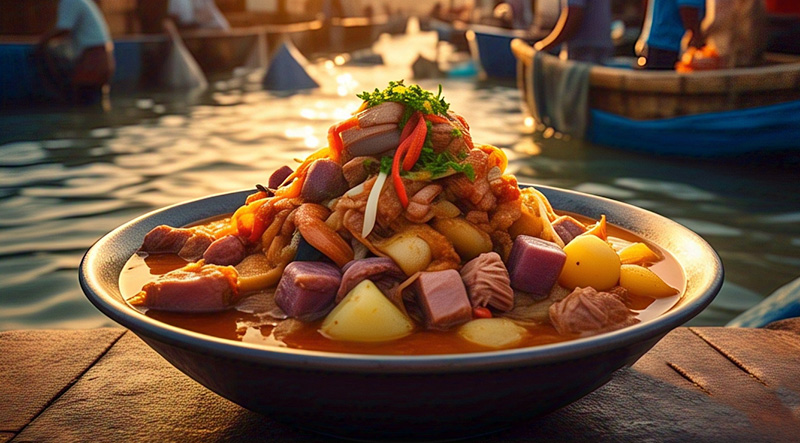
Build the Stew:
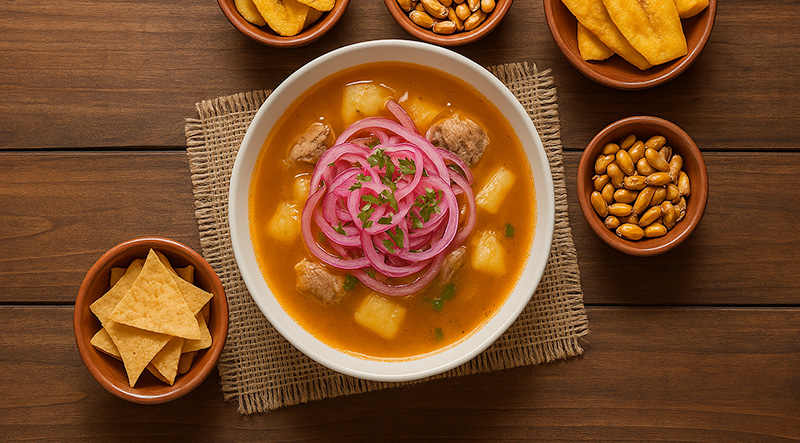
Prepare the Pickled Onions (Optional but Traditional):
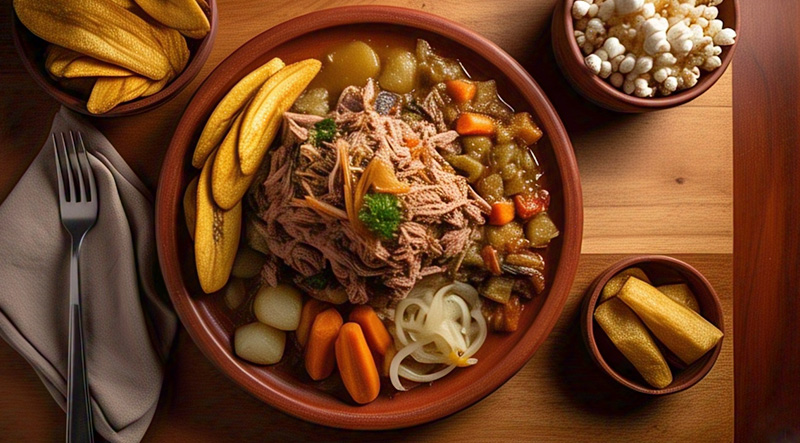
Serve:
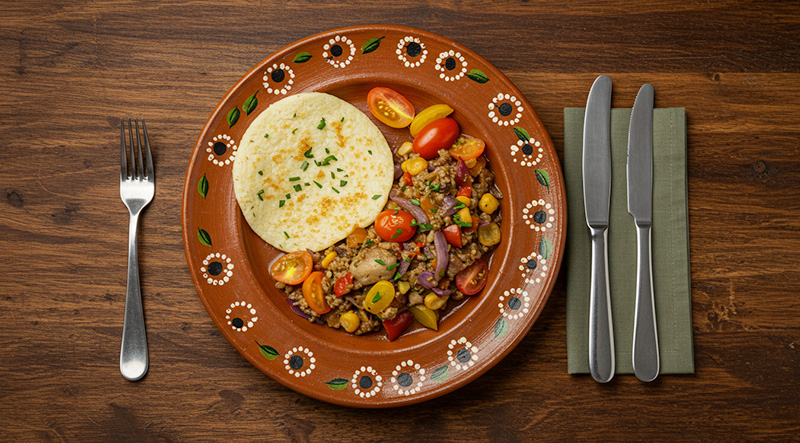
Tips & Notes:
Encebollado is Ecuadorian comfort in a bowl—rich, tangy, and packed with tradition. Whether you enjoy it for breakfast or dinner, it delivers big flavor and warmth in every spoonful.
The total preparation and cooking time for Encebollado is approximately 1 hour and 15 minutes. Preparation—including cleaning and cutting the tuna and yuca, chopping vegetables, and making the pickled onions—takes about 20–25 minutes. Cooking the tuna and yuca separately requires 20–25 minutes each, with some overlap. Preparing the tomato-onion refrito base and assembling the stew takes another 15–20 minutes. With efficient multitasking, the entire dish—from raw ingredients to a steaming bowl—can be completed in just over an hour, making it a flavorful yet manageable traditional Ecuadorian meal to prepare.
A single serving of Encebollado, based on the recipe provided, contains approximately 350 to 450 calories. The main calorie sources include the albacore tuna (about 200–220 calories per serving), yuca (around 100–120 calories for a modest portion), and the tomato-onion base sautéed in oil (roughly 50–70 calories). Optional toppings like pickled red onions add minimal calories, while sides such as plantain chips or avocado slices can increase the total by 100–150 calories if included. Overall, Encebollado is a nutrient-rich, protein-packed meal that's filling yet relatively moderate in calories, especially when served without heavy sides.







